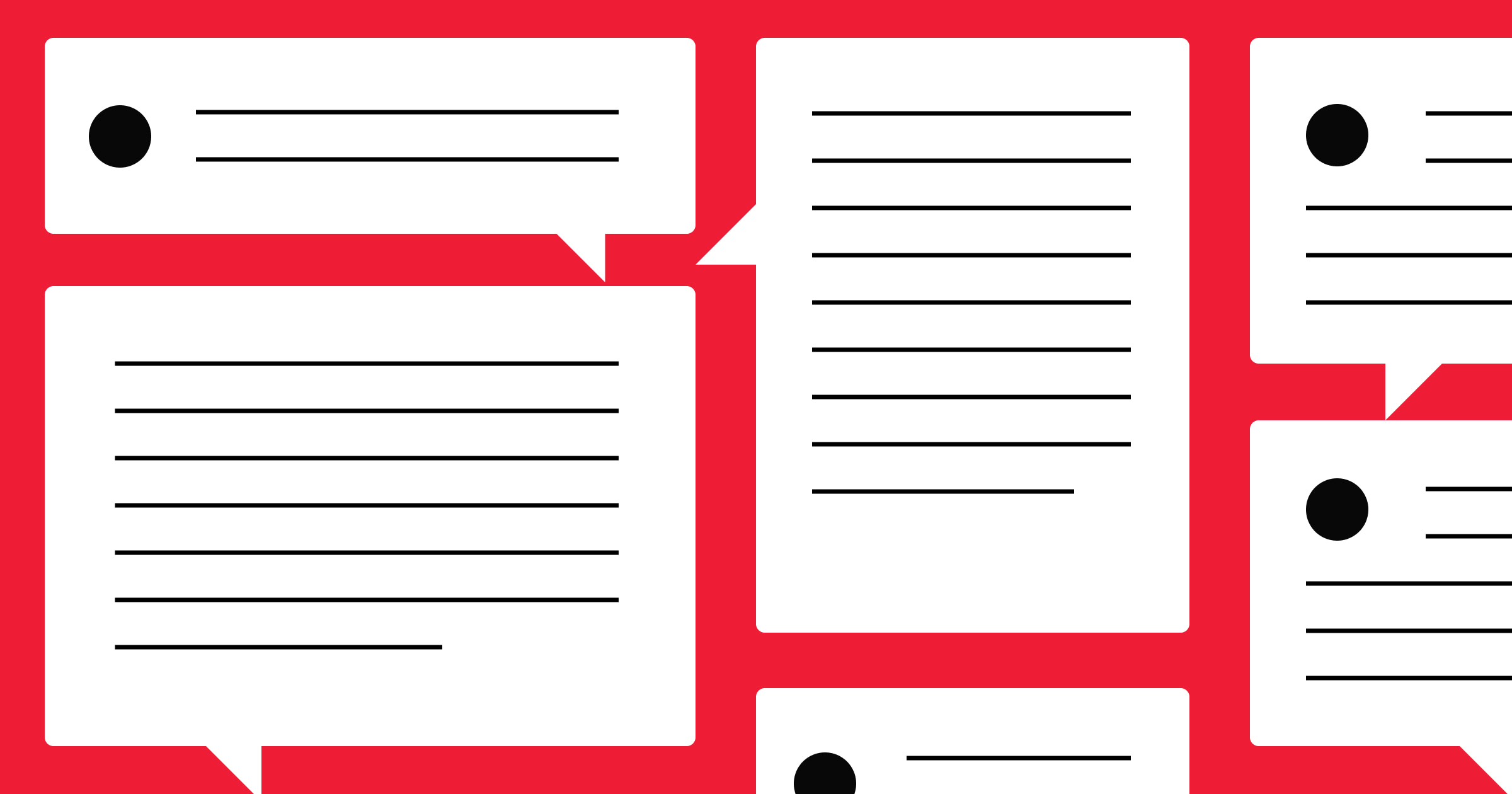Quality website copywriting converts interested site visitors into committed clients.
Excellent website copy increases conversions, enhances brand awareness, and maximizes visibility on search engines. It takes readers on a journey through your site, eventually addressing all their questions about you or your client’s brand.
This article will give you tips for writing website copy that meets all those objectives.
The purpose of website copy
Here are just some of the ways crafting compelling web copy turns casual website visitors into loyal clients.
Enhances your search engine visibility
Copywriting with SEO in mind helps make your site more visible. When people look up content on search engines, algorithms try to pull up the most relevant results. So, if you create web copy that matches those search queries, you’re more likely to earn a higher ranking on the search engine results page (SERP).
Improves your brand authority and awareness
Publishing knowledgeable web copy establishes your brand as a source of information in your industry. This has a dual effect: Search engines will recognize this authority and improve your SERP ranking, and readers will refer to your content more since it’s a credible resource. In both cases, people are more likely to find and engage with your website.
Increases conversion rates
Web copy can subtly guide website visitors through your marketing funnel, increasing sales. Headlines pique readers’ interest, copy informs them about your offerings, and calls to action (CTAs) direct them toward conversion.
Addresses user needs
Whether readers are troubleshooting your product or considering signing up, your web content should answer all their questions about your brand directly. With this information readily available, people won’t need to turn to third-party blogs for answers about your offering, which can keep them on your page for longer.
6 tips on how to effectively write copy for a website
Whether you’re writing the copy yourself or reviewing the work of others, keep these web copywriting tips in mind to make sure you’re publishing the best content.
1. Understand your target audience
Before you start writing, learn about your audience and their needs. Use a tool like Google Analytics to track your typical website visitor’s age, location, and interests. You can also explore your competitors’ websites to see who they are targeting. Then, tailor your copy to your audience’s pain points.
For example, the content you write for freelancers might explain how to manage multiple clients, while copy aimed at in-house teams might instead address building a strong company culture.
2. Avoid complex language
When writing website copy, avoid industry jargon and lengthy text. This style can confuse or overwhelm site visitors, steering them away from your page. Instead, use shorter sentences and precise wording that makes your message clear. Always double-check your work with a tool like Grammarly to look for other ways to simplify your writing.
3. Conduct keyword and competitor research
One way search engines learn about your content is by analyzing its keywords. Use tools like Semrush or Ahrefs to find industry-specific phrases and topics that readers often research. With this information, you can write website copy that matches people’s search intent.
These same marketing platforms can tell you which keywords your competitors are ranking highly for. You can draft similar copy that covers those keywords to stay competitive in search results.
4. Constantly review your content metrics
With the help of marketing tools like Webflow Analyze or GA4, track metrics to learn how effective your website copy is. Here are a few key performance indicators to keep an eye on:
- Page views — How many site visitors you receive.
- Average engagement time — How long your page was in the foreground of someone’s device.
- Conversion rate — The number of people completing a desired task, such as making a purchase or signing up for a newsletter.
- Bounce rate — The percentage of people who leave your site without interacting with it.
Tracking these (and other) engagement metrics tells you whether your web copy is driving people to take action on your site or not. Webflow Analyze lists this information directly in your dashboard, so you don’t need to manage third-party applications.
5. Make sure the information is updated
Keep your website copy evergreen, meaning it’s relevant no matter when a reader might see it. To make evergreen content:
- Leave out timelines — When possible, avoid mentioning specific dates or events that can quickly become outdated.
- Avoid jargon — Instead, use terms and ideas that have lasting relevance in your industry.
- Explore timeless concepts — Create content that addresses long-standing issues, themes, or questions.
For any web pages requiring time-sensitive text, like a product launch homepage or a listicle analyzing current industry trends, update the content on a regular schedule so it stays relevant.
6. Keep accessibility in mind
Readers come from all different backgrounds, so write copy that carefully follows accessibility guidelines to make sure all site visitors can engage with your page. Common best practices include using inclusive language, hierarchical formatting, and readable fonts.



















Unlock growth with SEO
Join Webflow and leading growth agency Graphite as they discuss actionable insights for scaling and achieving growth with SEO
Key elements of effective website copy
Here are a few components you should consider while writing content for your site.
Strong SEO strategies
Your website copy should include the keywords and topics you uncovered in your SEO research. But don’t just stuff each page full of these terms and hope for the best — search engines might perceive this as spammy, which can hurt your ranking.
Instead, address why people search for those words and phrases. For example, the title of this article starts with “How to” because people don’t just want to know what web copy is — they want to learn how to write it well.
Clear audience connections
Use the second person (“you”) and provide relevant examples to speak directly to your audience and their needs. This approach signals that you’ve created a product or service with readers in mind, making your content more relatable.
For example, when writing a service page, mention how each feature addresses a specific pain point or use case. Site visitors experiencing these issues will connect with this copy and may be more motivated to make a purchase or sign up for a service.
Intuitive instructions
To encourage people to take specific actions after visiting your site, write CTAs with clear directives, like “Subscribe to our newsletter” or “Sign up for free.”
Readers should also be able to understand where they’ll go next when clicking a link or button — otherwise, you risk confusing them and causing increased site bounces. For instance, a button that says “Contact us” should lead to an email form rather than a general “About” page.
High credibility
To boost your authority, support any claims your web copy makes with studies, data, and user testimonials. It’s also a good idea to ask subject matter experts to review your drafts before publication. That way, you don’t inadvertently upload inaccurate information.
Complementary platform details
Learn about other tools readers may use alongside your product, and write web copy to capitalize on those connections. Using this technique, you may attract new customers from brands you partner with.
For example, a project management software company might notice that many of their users rely on Slack for team communication. By highlighting the company’s Slack integration in relevant blog posts — like one about tips for improving remote work collaboration — they might reach Slack users who haven’t yet discovered the project management tool.
Inspirational text
Write website content that offers open-ended ideas about how readers can use your product. Give them inspiration for what they can do with it, and let them do the rest. They could find use cases you never considered, but if your website copy is too prescriptive, you could discourage their ideas.
Say you offer project management planning software. If all of your web copy focuses on technical terms related to leading a construction team, you’ll appeal to a smaller audience. But if you mention multiple use cases, such as managing multiple clients or handling personal tasks, more people might sign up for your service. These customers could use it to do tasks you didn’t necessarily expect, such as planning a wedding or launching a startup.
Publish effective, user-tested website copy with Webflow
Crafting good website copy takes practice, but following these writing tips will get you off to a strong start. As your writing improves, you’ll soon discover the need to revisit old web content to update it.
That’s when your choice of web design platform makes all the difference. With edit mode in Webflow, you can edit your copy directly in a visual canvas safely and securely — without relying on developers for every text change. Marketing teams can use this feature to quickly update messaging, refine CTAs, and implement SEO improvements without technical bottlenecks.
Webflow Optimize lets you test different copy variations to see which version resonates most with your audience. Create A/B tests for headlines, product descriptions, or CTAs — without relying on developers.

Build websites that get results.
Build visually, publish instantly, and scale safely and quickly — without writing a line of code. All with Webflow's website experience platform.































